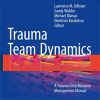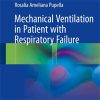Traumatic Hemorrhage and Chain of Survival
sjtrem.biomedcentral.comTrauma is the number one cause of death among Americans between the ages of 1 and 46 years, costing more than $670 billion a year. Following death related to central nervous system injury, hemorrhage accounts for the majority of remaining traumatic fatalities.
Among those with severe trauma that reach the hospital alive, many may survive if the hemorrhage and traumatic injuries are diagnosed and adequately treated in a timely fashion.
This article aims to review the recent advances in pathophysiology management following a traumatic hemorrhage as well as the role of diagnostic imaging in identifying the source of hemorrhage. The principles of damage control resuscitation and damage control surgery are also discussed.
The chain of survival for severe hemorrhage begins with primary prevention; however, once trauma has occurred, prehospital interventions and hospital care with early injury recognition, resuscitation, definitive hemostasis, and achieving endpoints of resuscitation become paramount.

















